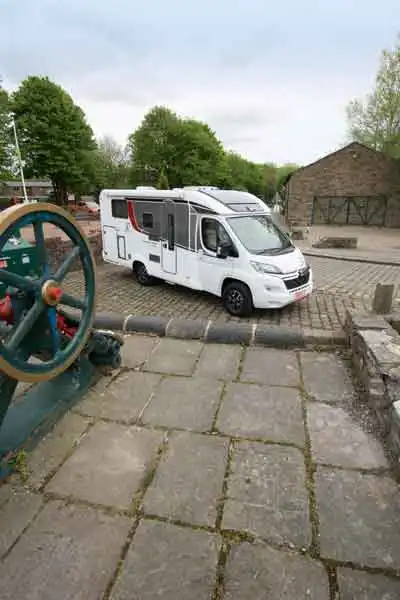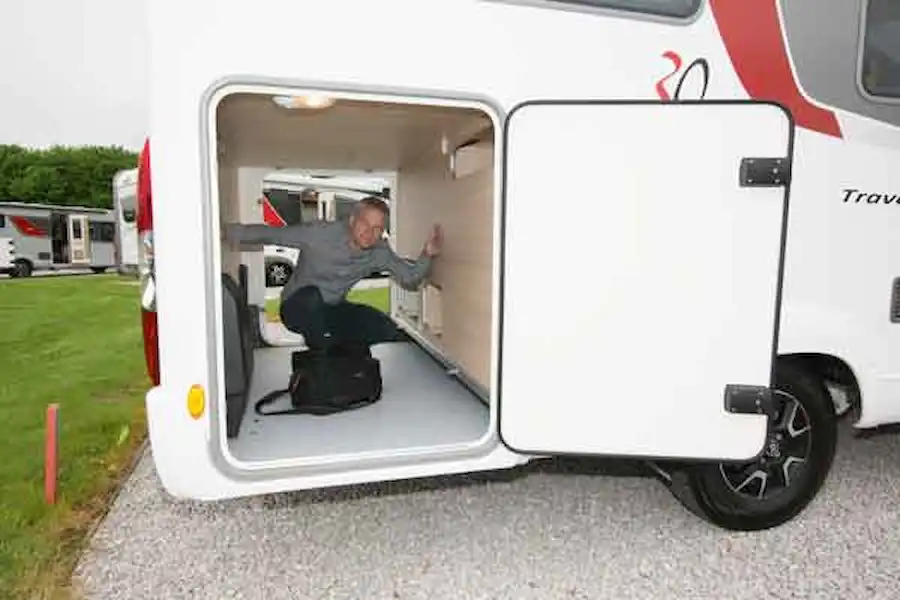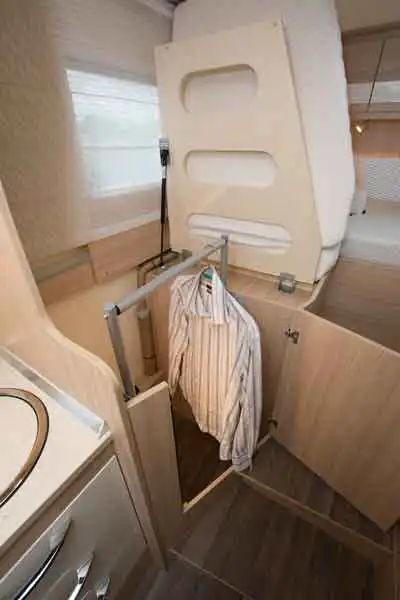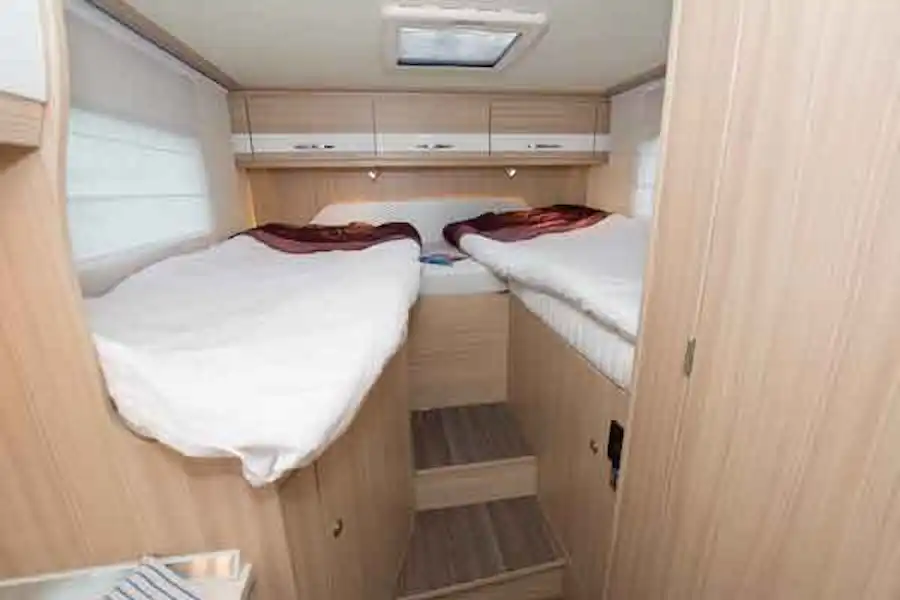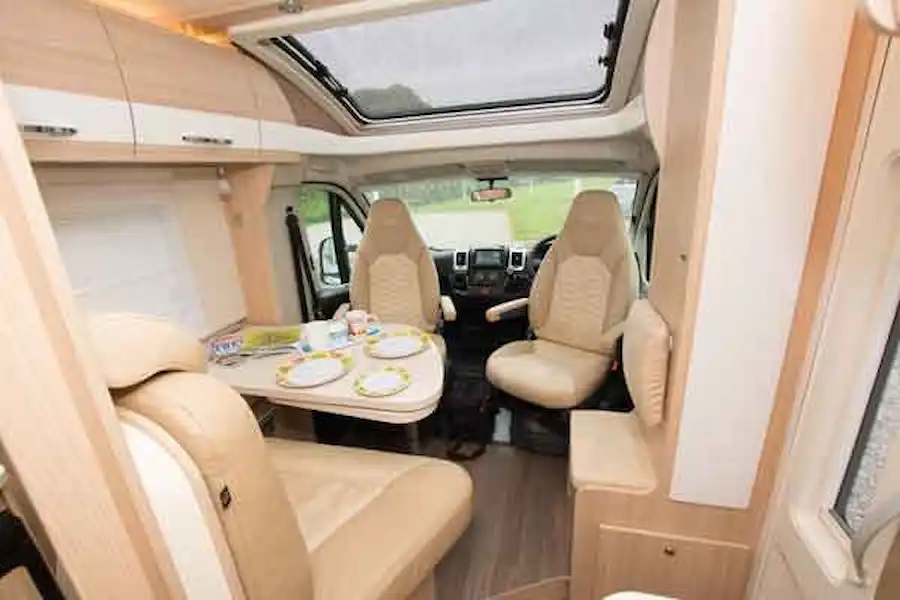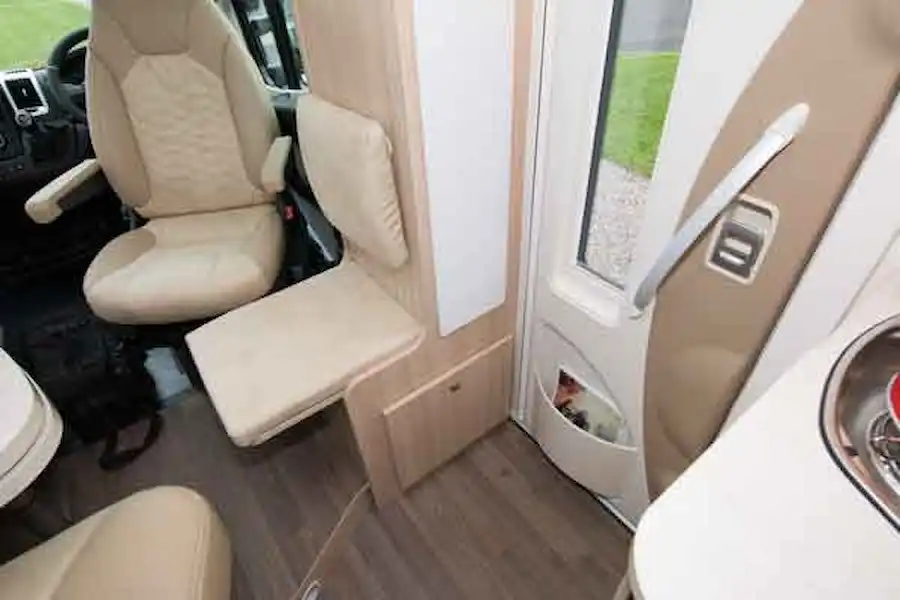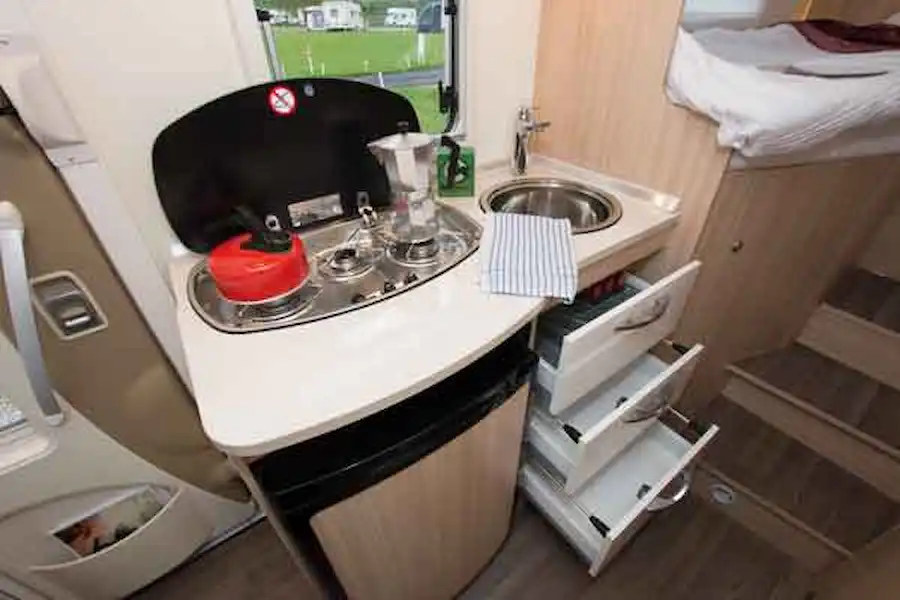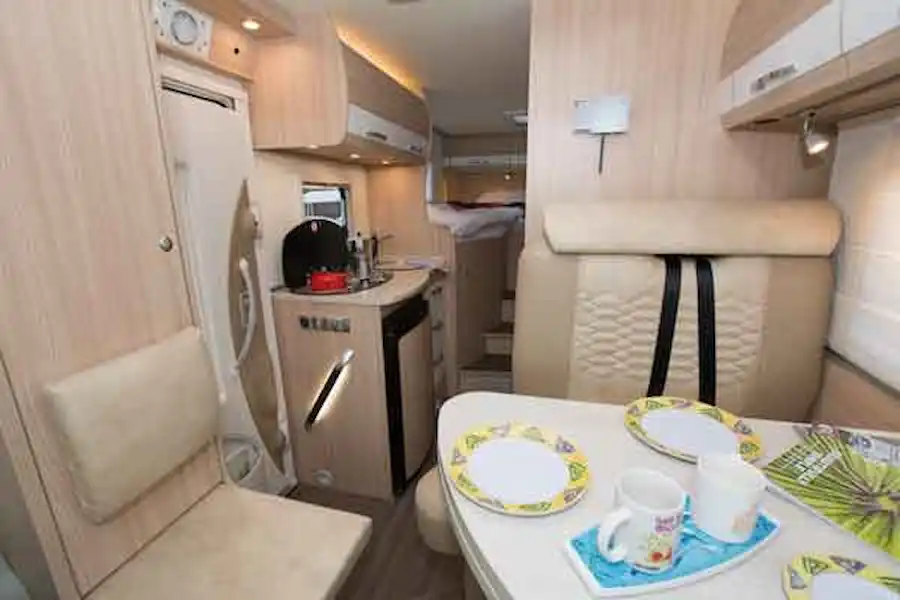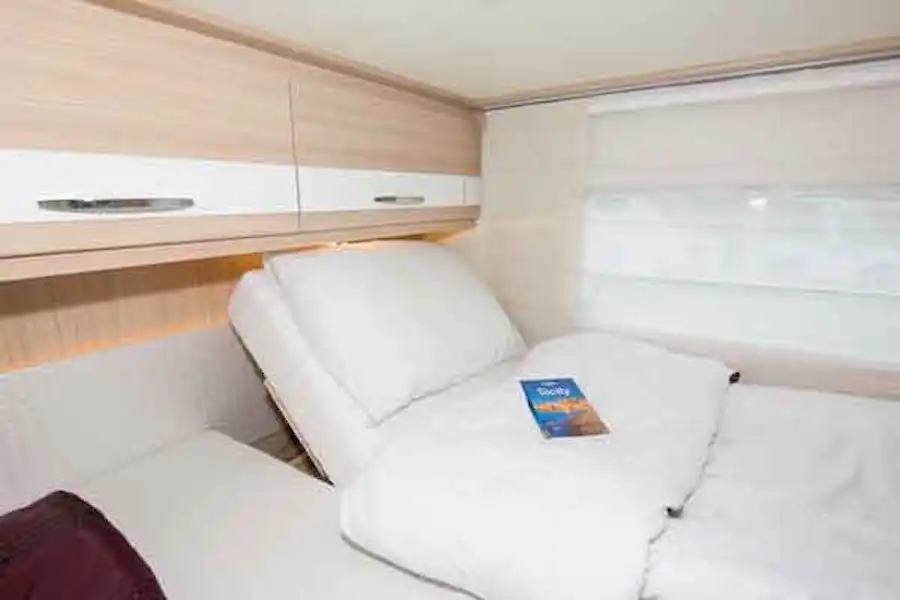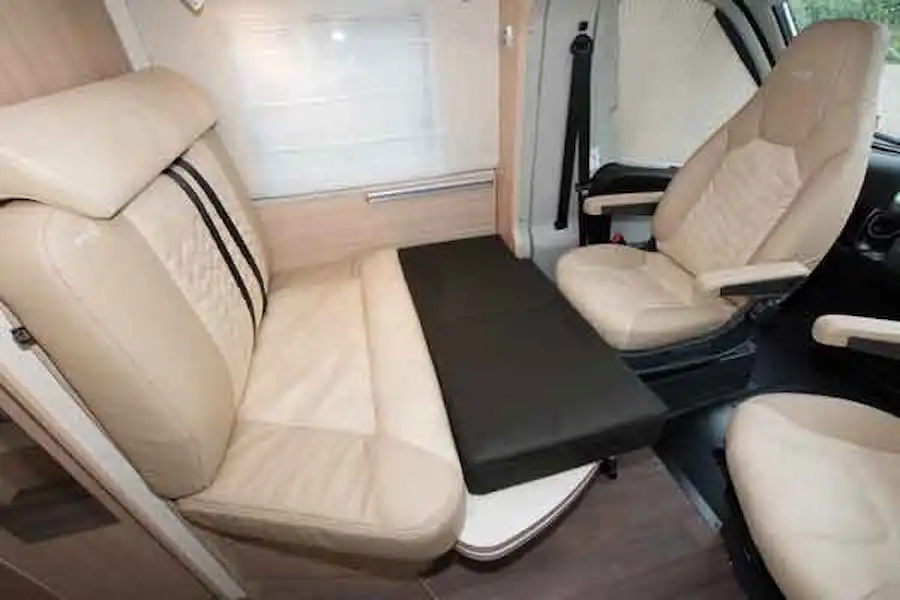Key Features
| Model Year | 2018 |
| Class | Low Profile |
| Base Vehicle | Citroën Relay |
| Price From (£) | 56,995 |
| Engine Size | 2.0TD |
| Maximum Weight (kg) | 3,500 |
| Berths | 3 |
| Main Layout | Fixed Single Bed |
At a glance
Full review
The Travel Van motorhome range has been a fixture in the Bürstner brochure, albeit as a slightly niche model, since 2008. It is the company’s entry in the slimline low-profile market, with a width of just 2.20m. Today, it comes with just one layout: the 620 G boasting fixed single beds over a garage.
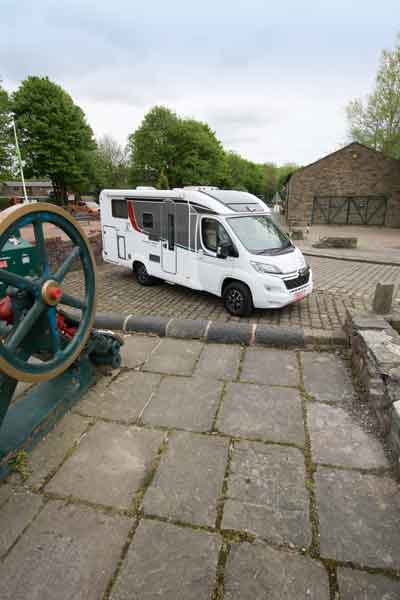
This is the Edition 30 marks three decades of Bürstner building low-profile motorhomes (its first coachbuilt debuted two years earlier, in 1986, its first caravan in ’58). Back then, this type of coachbuilt was almost unknown in the UK and the brand was truly innovating, just as it did when the Mega Van brought drop-down beds into low-profile ’vans.
Now, of course, low-profile models dominate the market, having largely taken over from overcabs. However, over those last 30 years, Fiat has also become an increasingly dominant force, its Ducato claiming at least three-quarters of European sales, so it’s interesting to see a Citroën cab here.
Bürstner also uses the French-branded base vehicle for its Lyseo A-classes, while staying loyal to Fiat for the rest of its range – and when customers want an automatic. Of course, Jumper and Ducato (and Boxer, too) are almost identical vehicles, built in the same Italian factory. Peugeot and Citroën use their own PSA engines, however.
PUT ON A JUMPER
Powered by a 2-litre, 130bhp, Euro VI diesel, the Citroën has an instant advantage over the ubiquitous 2.3-litre, Fiat 130 Multijet as soon as you turn the key. It’s smoother, quieter and generally less ‘diesely’. Some also claim that it’s more economical, though our drive this time wasn’t sufficiently long to verify that.
It was long enough, though, to show that this is a punchy power unit with more than adequate go for a small and relatively light coachbuilt like this. No need, then, to fork out £780 for the 160bhp version, unless you plan on loading up to the max.
On a personal level, I reckon the Citroën is the best-looking of the three Sevel vans but, grille and motor aside, everything else will be familiar to Ducato owners. In particular, there’s the same precise steering, surefooted handling and very firm ride.
Pleasingly, over the inevitable potholes around Bury in Lancashire, the only rattle was from the cooker lid.
The narrower bodywork proved a boon, too. Just 10cm may not sound much but it definitely makes a difference when you’re threading your way between parked cars and oncoming traffic.
A modest overall length of 6.60m and a wheelbase of only 3.45m add to the feeling of easy manouevrability, but we couldn’t help wondering how the Travel Van would respond with a lot of weight in the garage, considering the longish rear overhang.
IF LOOKS COULD THRILL
You’ll probably have guessed that the Edition 30 comes with a lot more kit than previous Travel Vans. That starts in the cab, where a Pioneer double-DIN multi-media unit includes sat-nav and a rear-view camera (which can display what’s behind even when you’re going forwards).
There’s a leather steering wheel, driver and passenger airbags, cab air-con, ESP with Hill Holder and Traction Plus, central cupholders, aluminium-effect dash’ trim and height-adjustable seats, too. The few optional extras (none of which featured here) include automatic air-con with pollen filter, front foglights, a 120-litre fuel tank and (something I’ve not come across before in a ’van at this price) heated cab seats.
Outside, there are 16in alloy wheels, but only four of them – a spare costs £490, complete with a carrier in the rear garage. There’s a generous payload of 650kg to begin with (including 20 litres of water), so you won’t worry about losing 22kg. And, while you’re consulting the options list, you might also want to add central locking for the habitation door (£210 and 2kg).
Pretty much everything else that you’d expect – and more besides – is standard on the Edition 30, so this isn’t one of those German ’vans that rockets in price as you tot up the options. In fact, at £56,995 it looks extremely good value.
That figure even includes the 3.5m roll-out awning with full-length LED strip light. It’s attached to a body of wood-free construction, with GRP roof and floor and a high-level third brake light neatly incorporated into the Bürstner logo.
Despite the use of Citroën’s low-frame chassis, though, the offside habitation door’s threshold is a fairly lofty 660mm off the ground. You’ll certainly need to use the electric step every time you climb aboard, which makes it more of a shame that it doesn’t auto-retract when you drive off. There’s just a red light on the fascia to tell you that – of course – you’ve forgotten to retract it.
Then, of course, there’s a substantial rear garage area, which is a key part of the appeal of this model. It has internal width of 0.98m, height of 1.12m, heating and lighting, tie-down hooks, and, best of all, two full-sized loading doors. Bürstner even clips the awning winder neatly to the rear wall, rather than just leaving it floating around.
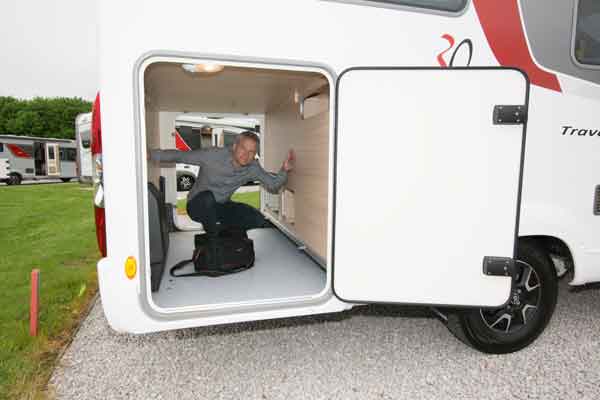
LUXURY LEATHER
There are few surprises in the half-dinette lounge, although the Rio Ferra leather and Nubuck upholstery is another indication of the high spec. Rio Havanna is the darker, more chocolatey alternative trim.
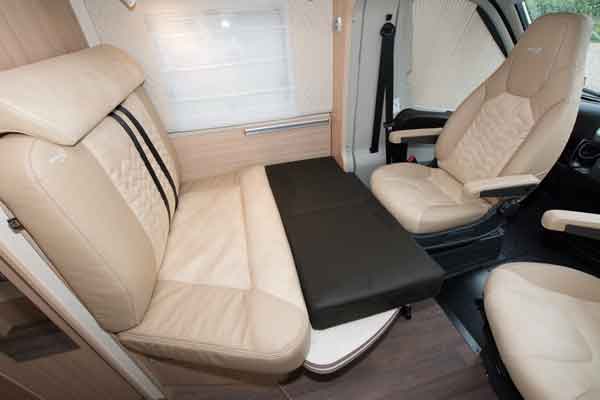
Some compact low-profiles of this type place a wardrobe behind the driver’s seat (which tends to feel intrusive), others put a small inward-facing seat here. Travel Van has both.
The wardrobe unit is slim and shelved, so it’s the perfect place for folded clothes (or you can remove the shelves and use the coat hooks within). The seat is more of a ledge, too small even for the most petite supermodel’s derriere until you pull out the base cushion. Then it becomes a potentially useful fifth place around the table or, better still, a footrest for the occupier of the swivelled driver’s seat – just right when watching the telly. No TV is provided but a bracket is mounted over the rear travel seat.
It’s not just the fancy upholstery that impresses, but the big overcab sunroof and the rail-mounted movable/removable reading lights over the table. Pity there are no spotlights in the cab, but a trio of ceiling spots give good general illumination. There’s a Heki sunroof over the lounge, too, but it’s the cheaper, push-up type.
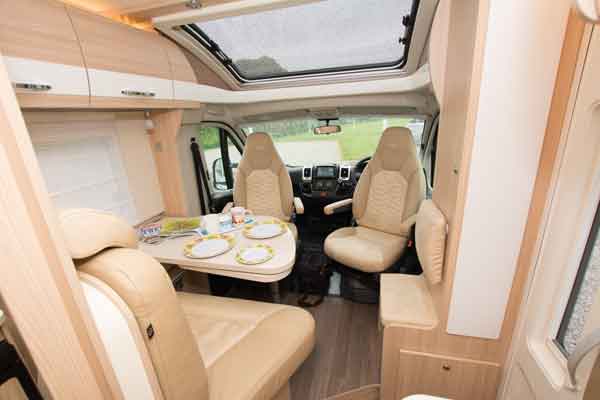
The upright half-dinette seating is another minor downside, along with the compromised front bed – both common to many rivals. Drop the heavy table onto a lower rail, add a large infill cushion and a child’s bed is created. But, even with feet on the cab seat, that child needs to be small.
LIGHT FANTASTIC
Darker woods have been en vogue recently in motorhomes but it’s easy to see the appeal of the Ginger Teak cabinetwork here because it creates a greater feeling of space. And, despite bathroom and galley facing each other, there’s no sense that the centre of the motorhome is overcrowded.
What is lacking is kitchen worktop, especially as there’s no extension panel. However, a loose cover for the sink and a little area in front of the three-rings-in-line hob do their best to save the day.
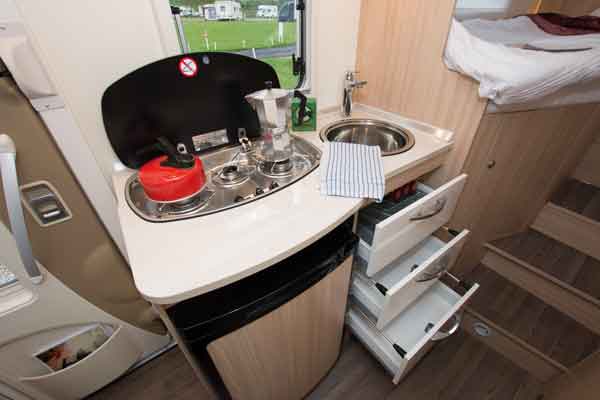
Storage is much better, thanks to a trio of large soft-close drawers. Alongside is a 96-litre Thetford fridge with automatic energy selection. Then, across the gangway, coat hooks and a full-length mirror on the washroom wall are welcome details.
GRAND DESIGN
Inside the washroom things get better still. There’s no shortage of room to use the swivel cassette toilet, the basin is large and comes with a swish waterfall tap, and there’s a large backlit mirror, a soap dispenser and a mug. Only the lack of any towel hooks is a negative.
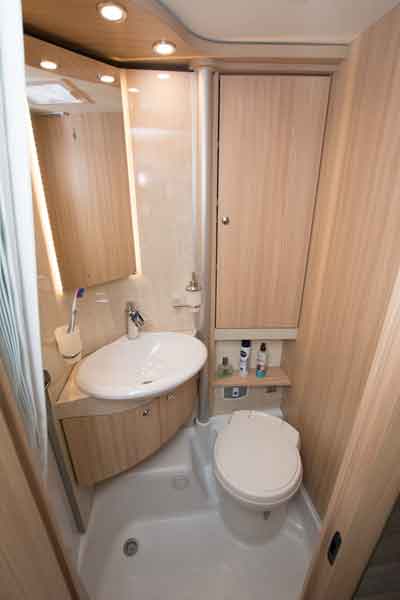
That will be forgiven, though, when you unclip the curved wall (onto which the mirror and basin are mounted) and rotate it over the loo. Now there’s a decent-sized shower with two drain holes and a concertina screen (not a clingy curtain) to cover the door. Top marks!
SUPER SINGLES
There’s more to like at the back if you’re in the market for a motorhome with single beds. These are easy to access (three steps), a very good size (over 2m long on the offside), have five-zone cold foam mattresses (extremely comfy!) and they feature heating ducted all around them (from the 6kW gas/electric Combi system). The heater controls are conveniently placed at the foot of the nearside bed, but there’s no privacy screen or curtain to shut off the bedroom from the rest of the living area.
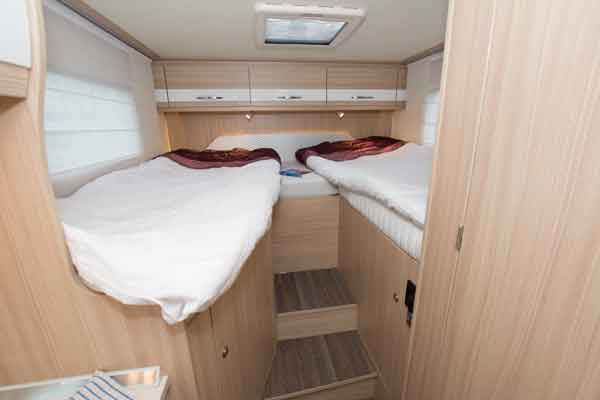
The lockers over the heads of the beds could inflict a headache if you wake up with a start but, for lazy Sunday mornings, they have backrests that rise on a ratchet system for breakfast in bed. Shame, then, that the reading lights are mounted too low.
In between the beds, a 0.97m-long cushion creates more shoulder-room at night, or it can be removed to leave an ideal surface for books, drinks, etc. There’s also an extra cushion to extend this central section to 1.38m long, but it makes access to the beds more awkward, so will probably be left at home.
Not that you’ll be short of storage. There’s a huge locker under the end of the nearside bed, while opposite is a second wardrobe with a 0.97m drop from its hanging rail. Both areas are illuminated and can be accessed via a door at the front or by raising a hinged panel under the mattresses.
Videos
Expert motorhome advice to your door!
Why not subscribe to one of our fabulous magazines and get expert advice, travel ideas, technical help and all the latest news for your motorhome and your motorhome adventures!
Want to know more about MMM magazine?
Every month MMM has articles written by motorhomers who have been there and done it, from great UK and European (and further afield) tours, campsite reviews, owners' reports and DIY projects among other things. MMM's tests, reviews and expert buying guides are not to be missed. MMM's technical advice is a must and includes everything from weekend jobs to longer-term DIY projects. And much more!
About MMM magazineWant to know more about What Motorhome magazine?
Every issue of What Motorhome magazine provides essential buying advice for anyone looking to buy a new motorhome or campervan or upgrade their existing model. With a pedigree of over 30 years of offering the best motorhome and campervan buying advice, every issue of What Motorhome includes more new motorhome and campervan reviews than you will find in any other magazine.
About What MotorhomeWant to know more about Campervan magazine?
Campervan is the exciting monthly magazine that will give you all the inspiration you need to explore the world in your campervan. Every issue is packed with real-life campervanning experiences, inspiring travel ideas in the UK and further afield, the best campsites to stay on, campervan road tests and reviews of the latest models, and much more!
About Campervan magazine

